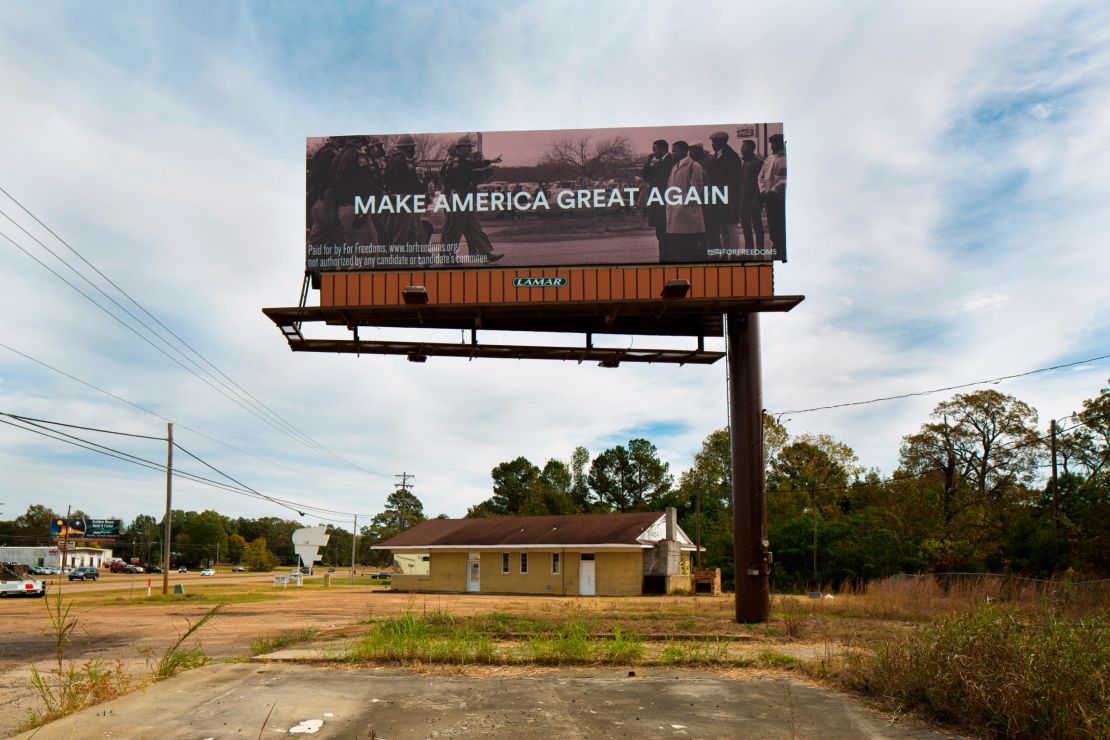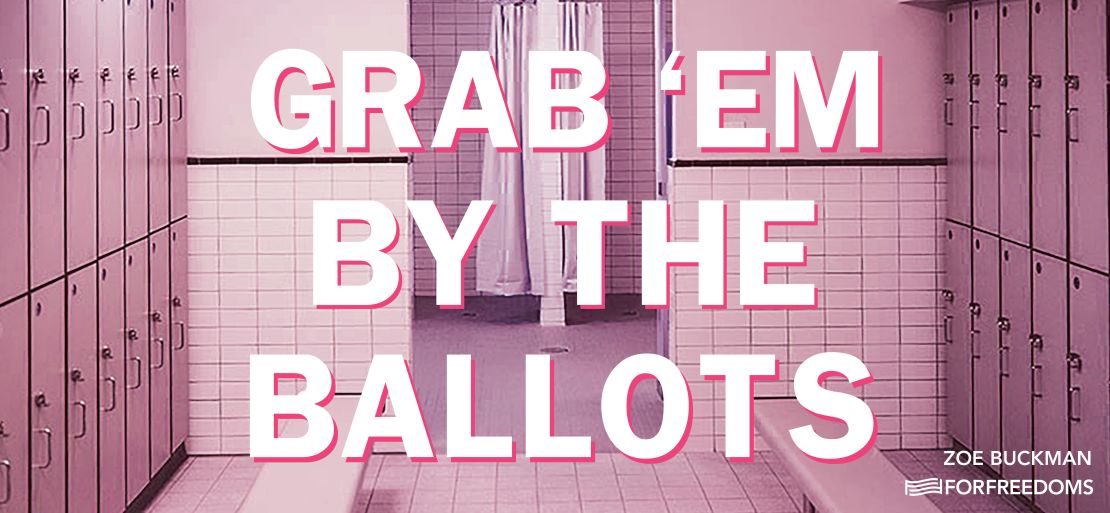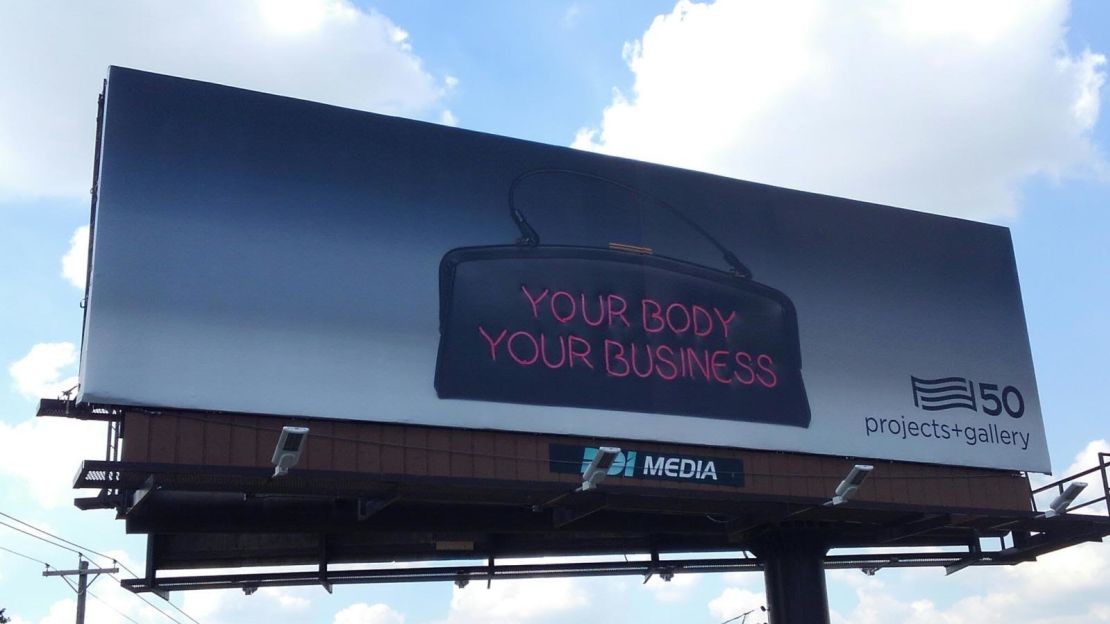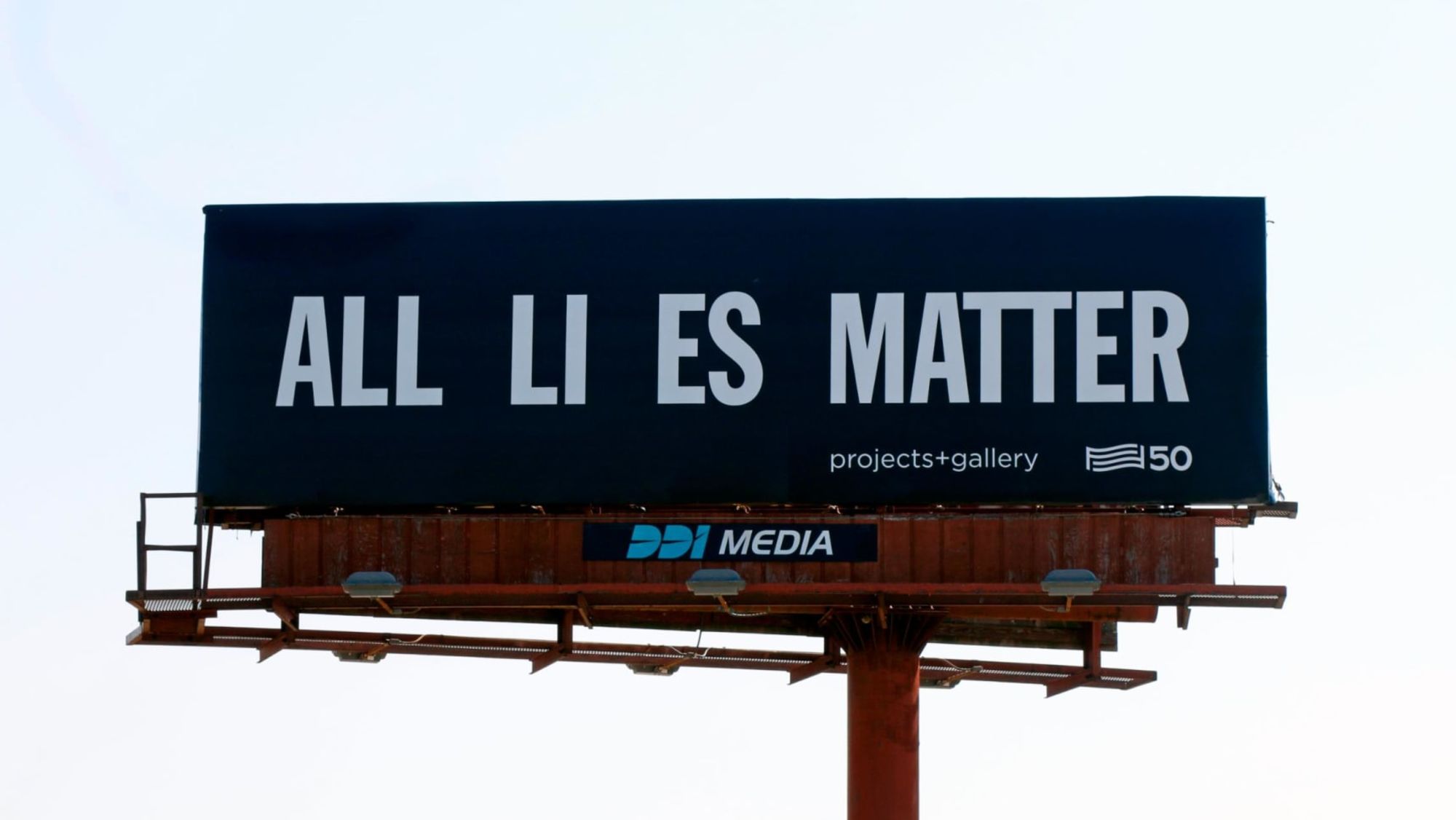Residents of Pearl, Mississippi, were surprised to see a “Make America Great Again” billboard appear on a roadside in November 2016. The slogan may have been familiar in the staunchly Republican city, but on this occasion it was printed in block letters over an iconic photograph from the civil rights era.
The original image (“Two Minute Warning” by photographer Spider Martin) shows the standoff between policemen and black protestors – including the civil rights leaders John Lewis and Hosea Williams – during the 1965 Selma to Montgomery March. Moments after it was taken, a number of the demonstrators were brutally beaten by police.
The controversial billboard was the work of For Freedoms, an organization using art to promote democratic participation.

“We thought it was a pretty clear questioning of (Trump’s) campaign slogan,” said For Freedoms’ co-founder, Eric Gottesman, in a phone interview. “What ended up happening was much more interesting.”
Onlookers seemed uncertain of the billboard’s purpose, with local media documenting Pearl residents’ apparent confusion. Meanwhile, For Freedoms claims to have received messages from alt-right groups accusing it of trying to stir up racial tension.
But the debate surrounding the project intrigued Gottesman and fellow co-founder, Hank Thomas. They had started a conversation with just one billboard.
Two years later, the pair’s new project, the 50 State Initiative, is encouraging what Gottesman calls “nuanced conversations” about public issues through art exhibitions, town halls, lawn signs and, crucially, more billboards.
A form of activism
Hoping to bring their vision to a wider audience, Gottesman and Thomas crowdfunded enough money to rent billboards in each US state. They then commissioned artists from across the country to create posters addressing political and social issues of their choice.
One of the artists, Zoë Buckman, joined the initiative in response to Donald Trump’s “grab them by the pussy” remark. With previous artworks exploring the female experience and the intersection of masculinity and femininity, Buckman collaborated with For Freedoms on a billboard that inverted the infamous phrase.

Installed in Harrisburg, Pennsylvania, in 2016, Buckman’s roadside artwork used the phrase “Grab ‘em by the ballots,” a stark white call to action set against a bright pink backdrop.
“I don’t want to create anything using what that man said,” she explained in a phone interview.
“I put up an image of a locker room, and I made that locker room pink. So it was obviously speaking to this idea of ‘locker room talk’ and sexual violence,” she said, referring to Trump’s defense of the comments.

Buckman, who is now working on a new billboard for the project, believes that art has a responsibility to provoke pubic dialogue.
“We’ve seen how intricately a piece of fruit can be painted; we’ve seen how magnificently the male form can be sculpted out of marble. We’ve gone to those boundaries visually in art already,” she said, adding that she is interested in producing art that is “uncomfortable, or couching these difficult conversations.”
Inherently political
The billboards, most of which will be unveiled in October, will address a variety of provocative topics. Mixed-media artist Kambui Olujimi, for instance, will use his artwork to explore recent debates around family separation.
With his previous work broaching topics from failed space launches to climate change, Olujimi sees art as inherently political.

“If you make a black square on your canvas, it’s a political statement and will be read with people and contexts,” he said in a phone interview. “I don’t think there’s a way to have an apolitical position as an artist, or even as an individual. It all has political ramifications.”
Gottesman and Thomas say that the new billboards are an attempt to add depth to America’s current political discourse, which they see as reductive and toxic.
Designing, printing, installing and renting each billboard will cost between $2,000 and $5,000 per month – money already raised though crowdfunding efforts.
Once the billboards are up, For Freedoms will publish a map of the locations online, with many of the artworks expected to stay up throughout November’s midterm elections.

Whether public art can sway votes remains to be seen, though Buckman expressed optimism about the project’s potential influence.
“I think it can be the entry point, and certainly a contributing factor (to seeing a different perspective),” she said. “And then there needs to be discussion, a kind of compassionate debate and a real thirst for learning and understanding.”
